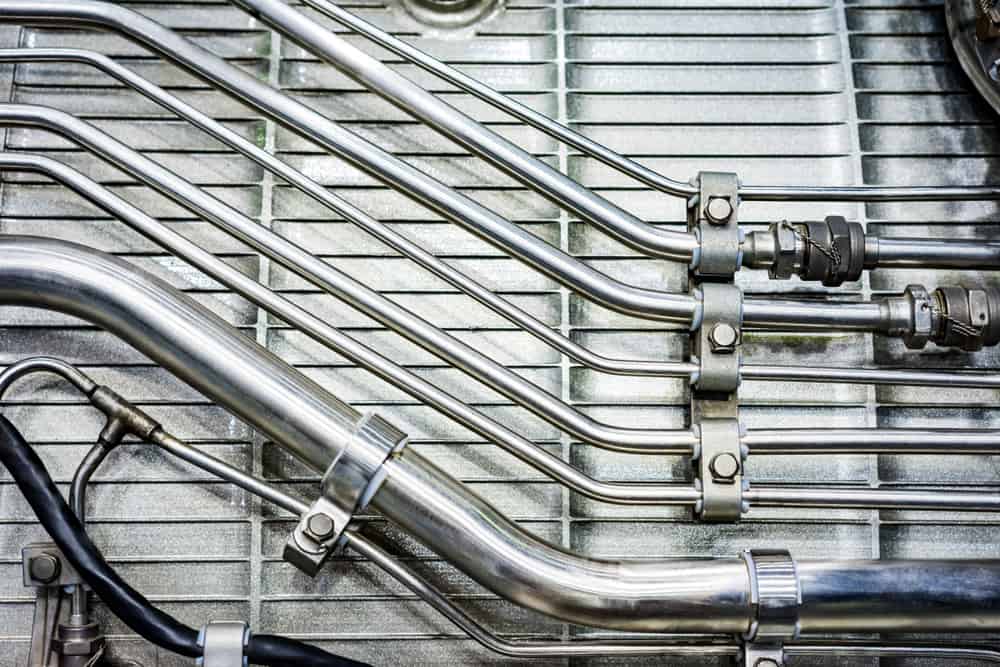
Autogenous welding is a welding process in which no filler material is used. Most welders are familiar with gas metal arc welding (GMAW), more often referred to as MIG welding, which uses a consumable electrode that becomes the filler material for the weld. Autogenous processes like gas tungsten arc welding (GTAW) or TIG welding, on the other hand, use a non-consumable electrode that does not act as filler material, although filler wire can be used with the non-consumable tungsten electrode.
So, is filler material required to make a good weld? Despite the commonly held belief that using filler creates a stronger weld, the answer is no. Autogenous welding, when used appropriately, yields excellent welds for critical industry applications such as fuel lines and hydraulic piping. In this post, we’ll explore the advantages of autogenous welding after first defining the process.
Is the Need for a Filler a Myth?
It is true that, when bonding two metals together permanently, there will be gaps that must be filled. However, that doesn’t necessarily mean that a filler metal is required or that filler metal makes the weld stronger. The figure below shows how welding processes are categorized.
As shown in the figure, fusion welding—where the base (metals being joined) materials are heated to melting—can be divided into three categories: homogeneous, heterogeneous, and autogenous.
- Homogeneous: The filler material is the same as the base material.
- Heterogeneous: The filler material is different from the base material. Typically, the filler is a steel, copper, zirconium, magnesium or nickel-based alloy, but can also be an electrode that is consumed during the welding process.
- Autogenous: No filler material is used. Instead, the base material is fused together to create the weld.
As the list above illustrates, filler material is not necessary for autogenous welds. In fact, filler is not required for solid state welding, either, in which the applied temperatures are lower than the melting point of the base material. Solid state welding can thus be considered autogenous as well. There are several types of autogenous welding processes, and each has its own distinct advantages and limitations.
Types of Autogenous Welding Processes
The most commonly used autogenous welding processes are:
- Gas Tungsten Arc Welding: GTAW or TIG welding uses a non-consumable electrode. While it does not require filler, a filler wire can be used, if desired.
- Laser Beam Welding (LBW): Instead of an electrical arc, a concentrated laser is used to melt the metal and create the weld. It has lower penetration than TIG welding but creates a very small heat-affected zone.
- Electron Beam Welding (EBW): This welding process uses a high-speed electron beam and does not require filler. It produces excellent penetration and a small heat-affected zone but is expensive and must take place in a vacuum chamber.
- Plasma Arc Welding (PAW): Plasma arc welding is similar to GTAW, however, an ionized plasma is used in order to produce higher temperatures. This method is faster and offers better penetration than GTAW, but is also more expensive.
- Atomic Hydrogen Welding (AHM): This is an older type of welding in which hydrogen gas is used along with two tungsten electrodes. Although not required, a filler can be used.
Not using a filler material can simplify the welding process, making it easier to achieve a good weld. Other advantages of autogenous welding are listed below.
The Advantages of Autogenous Welding
While many welders are aware of the benefits of welding with filler wire—such as increased welding speed—fewer recognize the benefits that autogenous welding offers, especially when performed using a reliable, hygienic method such as orbital GTAW. Autogenous welding:
- Creates visually appealing welds: Unlike processes using filler wire, autogenous welding processes have a lower tendency to create inconsistent or uneven bead patterns due to the presence of excess material filler and irregularity in the weld gap.
- Post-grinding is not needed: As no additional material is being added, there is no need to remove excess material after welding.
- Cost of filler material is eliminated: The cost of filler material can be significant depending upon the size of the job and the type of filler material being used. Welding without the additional cost of filler reduces welding costs and increases the project ROI.
- Best method of fusing thin sheets: Welding thin sheets poses a number of challenges, such as simultaneously controlling the amount of heat, weld bead profile, and arc start and stop. Autogenous welding minimizes and simplifies these variables.
- Easy to automate: An automated orbital weld head can easily perform an autogenous fusion weld on a thin-wall pipe or tube in minutes without requiring extensive experience in the welding process.
These advantages of autogenous welding make it ideal for jobs or projects in which thin-walled pipe or tubing is used, such as fuel and hydraulic lines for automobiles, industrial equipment, and aircraft, as well as piping for wastewater treatment and semiconductor processing. The use of this method should be limited to cases where pipe or tube wall thickness is minimal (approximately less than 3 millimeters); otherwise, lack of penetration depth may result in welds that are subject to failure. For precision and to optimize uniformity, an orbital welding process using an automated weld head is the best option. In addition to improved weld quality, orbital welding also increases the speed of production, which further increases the cost savings of not using a filler material.
Since its founding by former NASA engineers in 1976, Arc Machines, Inc. has been an industry leader in producing high-quality and high-tech orbital welding equipment. This includes orbital weld heads that make it easy to leverage the advantages of autogenous welding. For inquiries regarding products, contact sales@arcmachines.com. For service inquiries, contact service@arcmachines.com. Arc Machines welcomes the opportunity to discuss your specific needs. Contact us to arrange a meeting.




